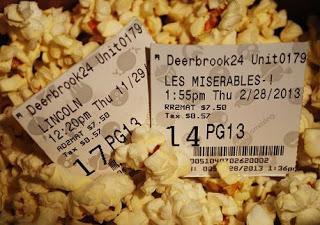
Photo by Patrick Feller.
Growing up at the tail end of the Baby Boom, I have spent decades watching my slightly older peers influence culture in a big way. Most recently, I watch them making great strides in redefining aging. I see older adults challenging stereotypes in the workplace, in civic organizations, in social media and in popular media. For example, more and more films are depicting older adults in multidimensional ways.Sure, there are some films that exploit stereotypes of aging, particularly flat characters in comedy roles such as the dirty old man or the feeble old lady. However, more films depict older adults as complex, dynamic people with similar concerns as young adults: pursuing intimacy, wielding power, and shaping identity. More films observe how people are achieving, creating, and exploring throughout the entire lifespan.
Too often news outlets decry the Silver Tsunami as a problem for healthcare budgets. But the graying of American also drives other markets, including entertainment. Fortunately, a growing number of journalists and bloggers are taking notice of the increasing number of films that appeal to older adults:
- Barnes & Ceiply "Graying Audiences Return to Movies" 2/35/11 from The New York Times
- Brooks Barnes "Older Faces on Screens Draw an Overlooked Crowd" 5/23/12 from The New York Times
- Cameron Mount "Film Trends Will Change with Aging Baby Boomers, Professor Says" 10/29/12 from The Daily Nebraskan
- Linda Barnard "For Hollywood, Gray Is the New Gold" 12/24/12 from TheStar.com
- Stephen Whitty "Why Hollywood Needs to Grow Up about Growing Old" 1/13/13 from The Star Ledger
- Ina Jaffe "Baby Boomers Return to the Multiplexes, and Hollywood Notices" 2/21/13 from NPR
- Daniel Miller "Grownups to Movie Studios: If It's Worth It, We Will Come" 3/3/13 from Portland Press
Emmanuel Levy notes this in an analysis of indie films. "Efforts to attract older viewers include an increased output of niche pictures aimed at specific demographics." Levy cites a studio executive's view of older adults' tastes in films: "The aging and graying of America has affected the kinds of movies made. 'Adults are quality-driven, review driven, subject-matter driven,' said Thomas Pollock while heading Universal."
While the numbers may not be astronomical, they are respectful. Consider the box office totals for following recent releases:
- $46.6 million The Best Exotic Marigold Hotel (opened May 4, 2012)
- $63.5 million Hope Springs (opened August 8, 2012)
- $5.9 million Amour (opened December 19, 2012)
- $11.2 million Quartet (opened January 11, 2013)
For example, Amour won the 2012 Oscar for Best Foreign film. It's an Austrian film set in France. The film cost roughly $9.5 million to make (converted from Euros). It took in not only the $5.9 million in US theaters, but add to that, the box office receipts abroad as well.
But for comparison sake, Amour was much less expensive than Skyfall, which had an estimated budget of $200 million. Skyfall also cleared a good profit with international ticket sales as well.
And how about those films with strong intergenerational appeal? This short list including Skyfall with its depiction of age-related challenges facing Bond and M.
- $304.3 Skyfall (opened November 9, 2012)
- $180.1 Lincoln (opened November 16, 2012)
- $115.3 Silver Linings Playbook (opened November 21, 2012)
For a rich discussion of films that appeal to older adults, check out AARP's section called Movies for Grownups, which includes annual awards.
Here is a video of their winners for films released in 2012:
Related:
Films Featuring Older Adults

